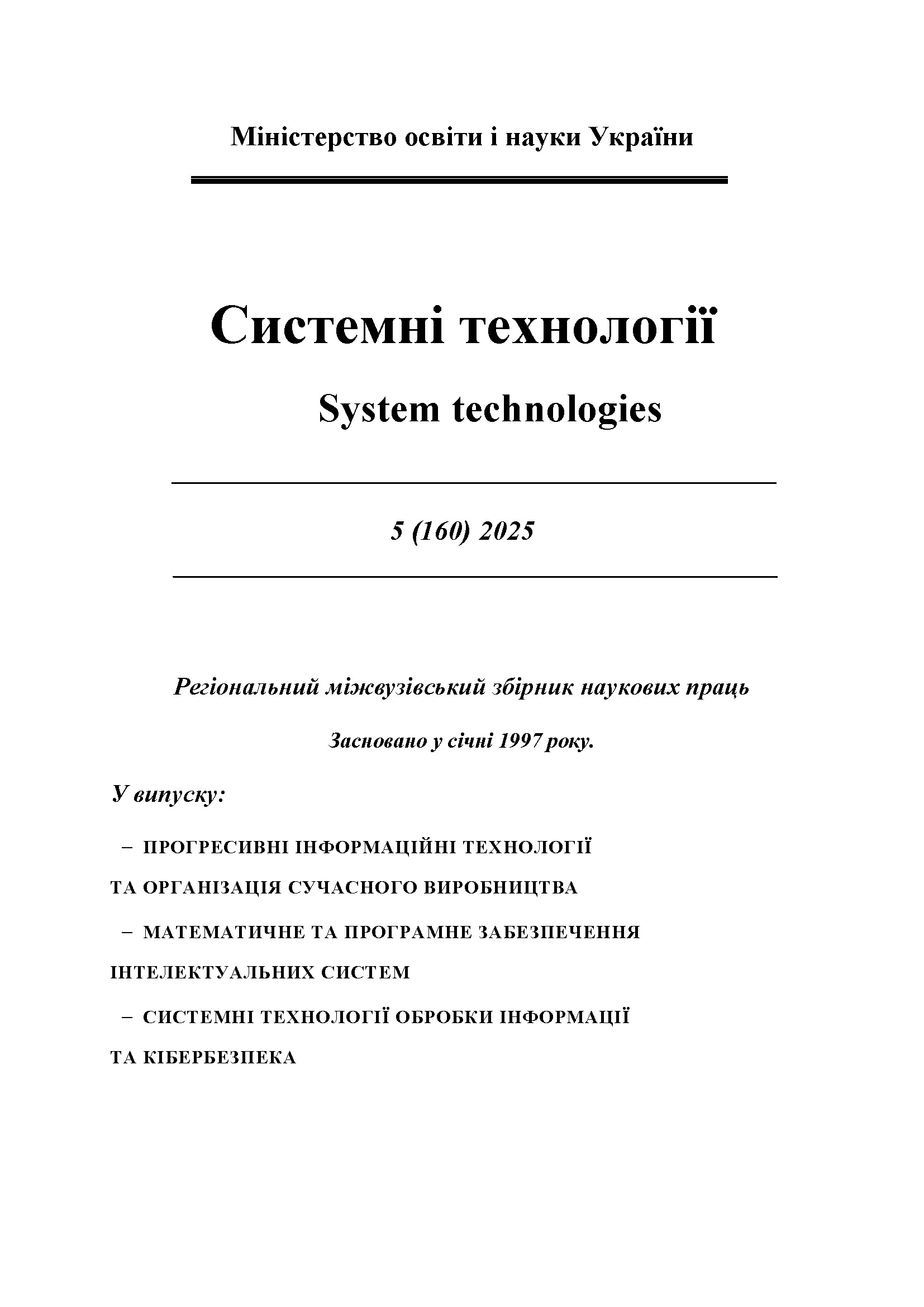Numerical analysis of aerodynamic characteristicsof non-circular cones in supersonic flow
DOI:
https://doi.org/10.34185/1562-9945-5-160-2025-13Keywords:
supersonic flow, drag coefficient, lift force, cone, cross-section, Euler equations, boundary layerAbstract
Numerical modeling of viscous gas flows around non-axisymmetric lifting bodies streamlined at an angle of attack is one of the urgent problems of modern aerodynamics. Such bodies have high aerodynamic quality and are promising in the creation of maneuverable aircraft.
The paper considers the problem of supersonic flow of a viscous gas around a sharp cone with an arbitrary smooth cross-section. It was assumed that the effect of viscosity is con-centrated in a thin layer near the solid surface, and the entire flow region between the body surface and the shock wave can be divided into an inviscid flow and a boundary layer.
The flow regimes considered were when the shock wave formed in front of the cone is attached to its top and the inviscid flow around it is conical. The integration of the system of differential equations of Euler was carried out using a stationary analogue of the Godunov method, using the principle of establishing a solution along the longitudinal coordinate. To solve the boundary layer problem, the Petukhov finite-difference method was used. As a result of solving the specified boundary value problems, the velocity and pressure fields in the boundary layer and in the inviscid flow region, as well as the integral aerodynamic coeffi-cients, were found.
Based on the proposed methodology, calculations of aerodynamic coefficients for bi-elliptical cones were performed. The surface shape of these bodies is specified by three geo-metric parameters δ1, δ2, θk (θk is the half-angle of the cone in the plane of the major semi-axis, δ1 and δ2 are the ellipticity coefficients of the lower and upper semi-ellipses).
Numerical analysis of aerodynamic characteristics showed that taking into account the influence of the boundary layer leads to a significant increase in drag and a decrease in aer-odynamic quality. The contribution of viscous components to the lift and longitudinal moment is insignificant. The shape of the cone cross-section has a significant effect on the value of its aerodynamic coefficients.
References
Mitchell R.R., Webb M.B., Roetzel J.N. A study of the base pressure distribution of a slen-der body of square cross-section. In: 46th AIAA Aerospace Sciences Meeting and Exhibit., 2008-0428, American Institute of Aeronautics and Astronautics Inc. https://doi.org/10.2514/6.2008-428.
Tadakuma K., Tani Y., Aso S. Effect of Fuselage Cross Section on Aerodynamic Charac-teristics of Reusable Launch Vehicles. Open Journal of Fluid Dynamics, 2016, 6, 222-233. http://dx.doi.org/10.4236/ojfd.2016.63017.
Tonkoshkur I.S. Mathematical modeling of flows of rheologically complex fluid over the surface of a cone. Problems of applied mathematics and mathematic modeling. 2024. Vol. 24. P. 214-221. https://doi.org/10.15421/322422.
Bashkin V.A., Egorov I.V. Numerical modelling of dynamics of viscous perfect gas. M.: Fizmatlit, 2012. 372 p. (in Russian).
Paredes P., Theofilis V. Accurate Parabolic Navier-Stokes solutions of the supersonic flow around an elliptic cone. 51st AIAA Aerospace Sciences Meeting. 2013, Grapevine, Texas. https://doi.org/10.2514/6.2013-670.
Kotebavi V., Rakesh S. G. Supersonic Flow over Elliptic Cone with Different Ellipticity Ratio. Journal of Applied Fluid Mechanics, 2023, Vol. 16, No. 12, pp. 2494-2503. https://doi.org/10.47176/jafm.16.12.1865.
Wilcox F., Birch T., Allen J. Force, surface pressure, and flowfield measurements on a slender missile configuration with square cross-section at supersonic speeds. 22nd Applied Aerodynamics Conference and Exhibit. 2004, Providence, Rhode Island. https://doi.org/10.2514/6.2004-5451.
Mahjoob S., Mani M., Rahni M.T. Aerodynamic performance analysis of bodies with dif-ferent cross-sections. 20th AIAA Applied Aerodynamics Conference 2002. St. Louis, Missouri. https://doi.org/10.2514/6.2002-2941.
Nallappan R., Prasath M. Analysis of Missile Bodies with Various Cross sections and En-hancement of Aerodynamic Performance. International Conference on Systems, Science, Control, Communication, Engineering and Technology. 2015. 115-119. Print.
Chen J., Fan X. Shape Optimization of the Cross-Section for Noncircular Hypersonic Missile Forebody. International Journal of Aerospace Engineering. 2020, 9 р. https://doi.org/10.1155/2020/8885494
Numerical solution of multidimensional problems of gas dynamics / S.K. Godunov et al. M.: Nauka. 1976. 400 p. (in Russian).
Kotlyar Y.M., Sovrechny V.D., Strizhenov D.S. Methods and Problems of Heat and Mass Transfer. M.: Mashinostroenie, 1987. 320 p. (in Russian).
Downloads
Published
Issue
Section
License
Copyright (c) 2025 System technologies

This work is licensed under a Creative Commons Attribution 4.0 International License.















